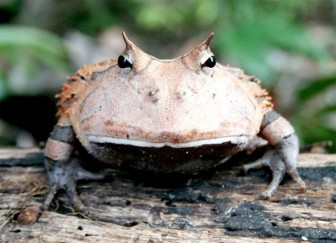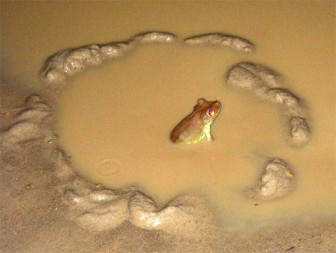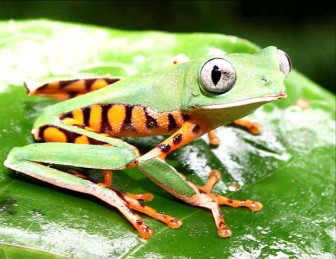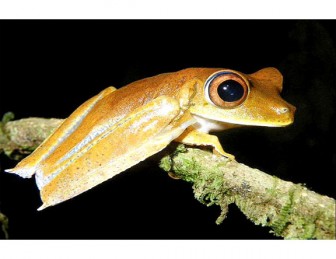Frogs are amphibians; they have moist, scaleless skin and are exothermic animals. This means that their body temperature depends on the temperature of their environment. Frogs in the tropics have warm blood because their environment is warm! The term ‘Amphibian’ comes from the Greek words amphi meaning ‘both’ and bios meaning ‘life.’ Most amphibians begin their life in water before emerging on land and can absorb water and oxygen though their skin.
Frogs begin life as shell-less eggs which hatch into tadpoles. Fish-like, they breathe though gills but slowly develop hind legs and lungs. As they develop lungs, their tail reabsorbs and they graduate to life on land as froglets.
Frogs are carnivorous and feed on a variety of invertebrates like insects and spiders. Bigger species even feed on small mammals such as mice. Toads are frogs too; they often have drier skin, shorter legs and have no teeth. Most other frogs have tiny teeth used to hold their food, not for chewing.
During the rainy season it is common to hear frogs singing, croaking and hollering. Only male frogs call for mates, so if a frog is singing, it’s a male and every frog species has a different call. During hot, dry months, most frogs become less active and burrow into the ground. This period of inactivity is called stivation.
Amphibian and frog populations are declining globally, and many species are on the verge of extinction or already extinct. There are several reasons for the dramatic species losses all over the world. Global warming and extreme weather events like El Niño have negative effects on frogs and their offspring, as droughts cause the drying out of eggs. Many frogs are losing their natural habitat because of human habitation, extensive timber harvesting or agricultural use.
The chydrid fungus (Batrachochytrium
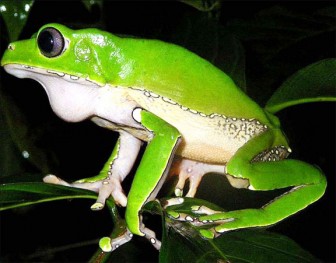
dendrobatidis) is killing many species of frogs at different places in the world. At the moment the disease is spreading fast and is untreatable in the wild. Water pollution through activities such as mining or pesticides can be a major threat to amphibian health.
Frogs eat a lot of insects that could spread diseases like malaria, dengue or cause damage to our crops and are indicators of environmental health. Their presence or absence is an early warning system to tell when the environment is changing.
Rain forests are rich in biodiversity and are home to many different plants and animals. In addition, indigenous communities make their homes there. Even if you don’t live in the rain forest, humans rely on the forest for resources such as building materials (wood and lianas), medicine and fruits. Rain forests also provide essential environmental services for life on earth; they create soil as well as prevent soil erosion, produce oxygen though photosynthesis, maintain clean water systems, and are a key defence against climate change.
The Iwokrama Rain Forest is 371,000 hectares, located in the heart of Guyana. Our mission is to develop strategies for conservation and sustainable development for local people in Guyana and the world at large. We are involved in tourism, training, research and our timber is certified by the Forest Stewardship Council. Come and visit us in the rain forest or at http://www.iwokrama.org.
